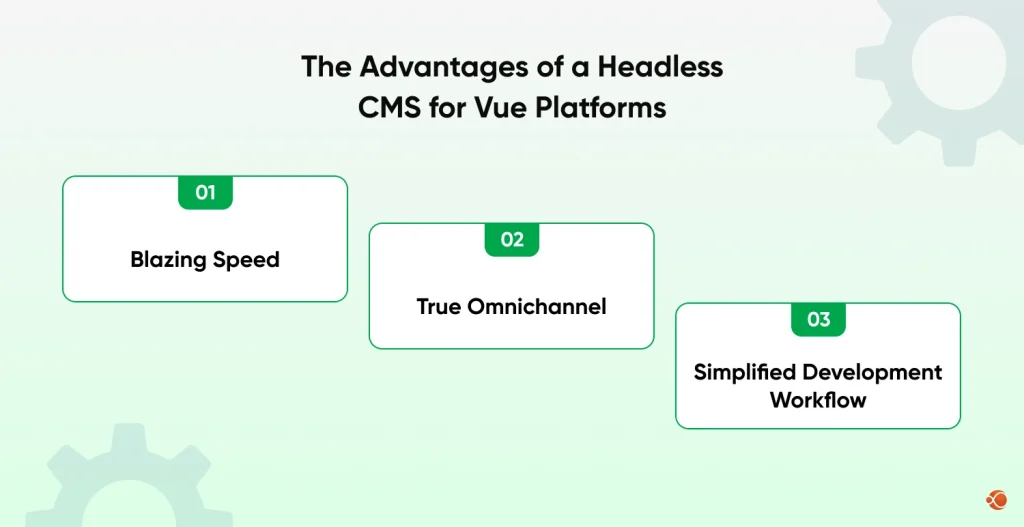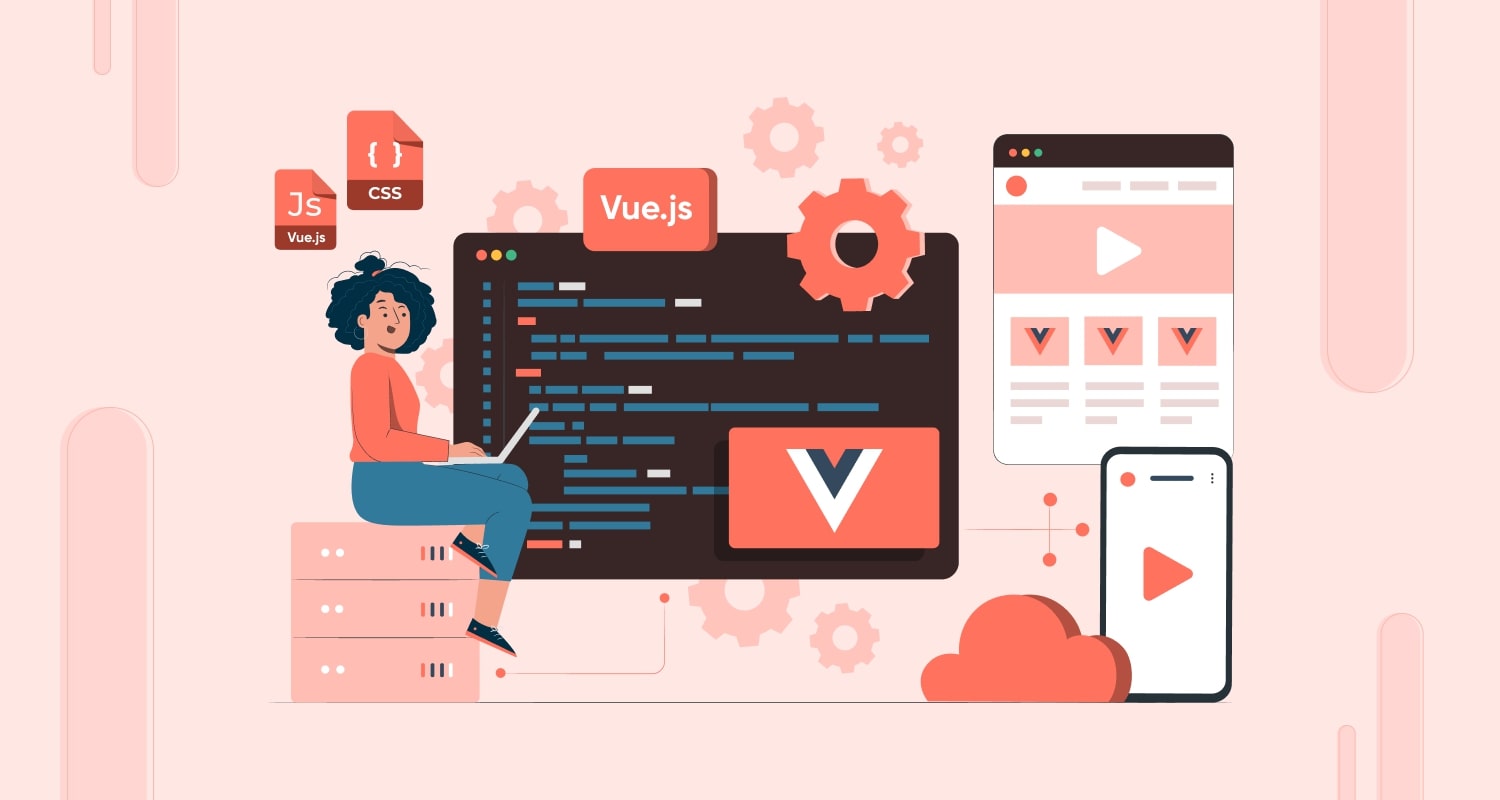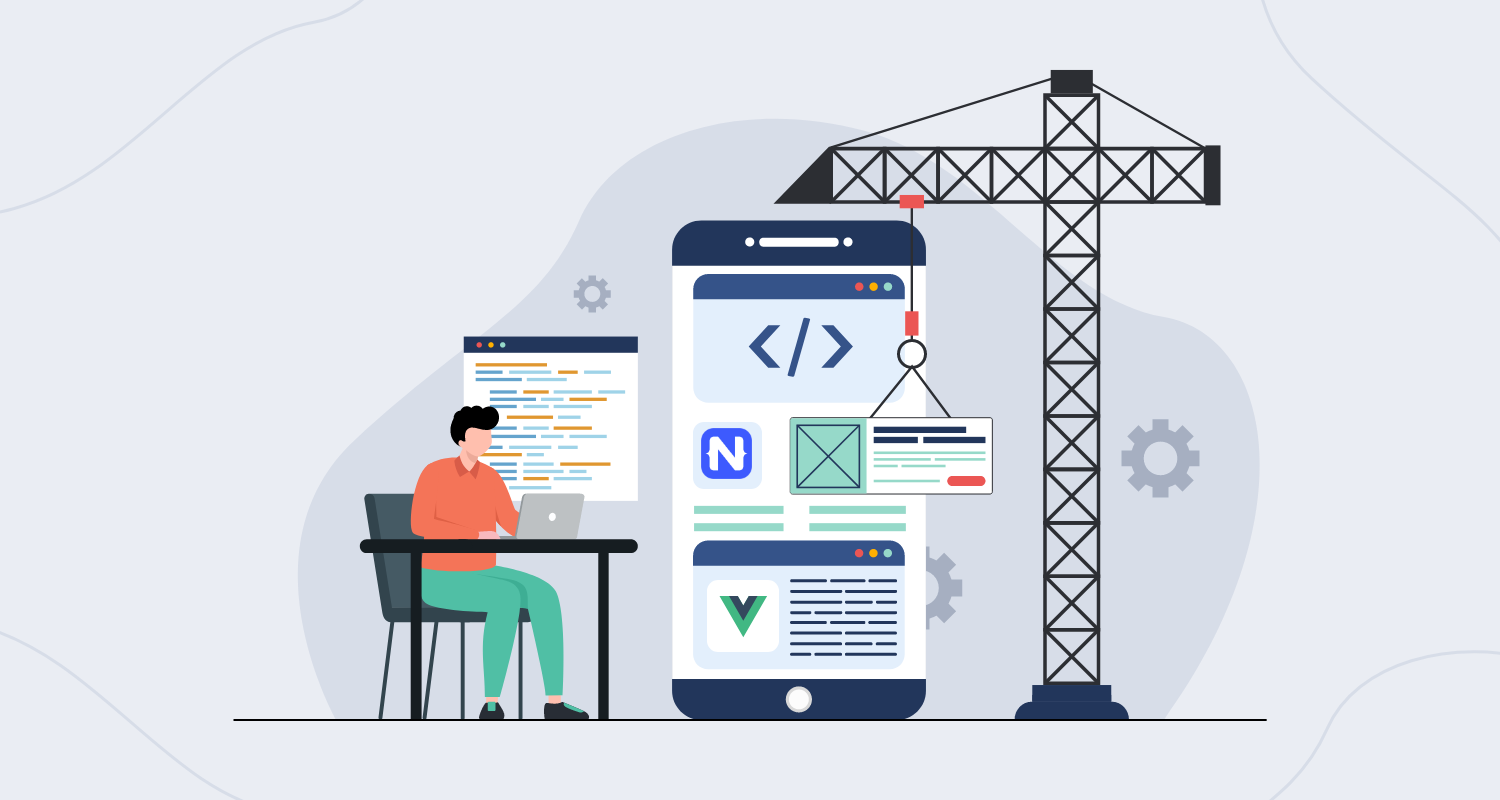Quick Summary: Building a modern Vue.js app, but stuck with clunky content management? A headless CMS for Vue.js separates content from the frontend, offering blazing-fast performance and true omnichannel publishing. Learn which platforms will future-proof your projects in 2026.
The year is 2026. If you’re building a fast, modern digital product, you’re likely using Vue.js. Vue is loved for its approachability and progressive nature, but the secret to truly bulletproof performance and team agility isn’t just the frontend framework; it’s the headless CMS for Vue.js you pair it with.
We’re past the point where a monolithic platform made sense. Today’s success relies on decoupling: setting your content free from your presentation layer. This freedom enables your content team to publish across every channel, from web to mobile to smart displays, while your development team builds in the most efficient and performance-optimized way possible, utilizing frameworks like Nuxt.js.
The modern VueJS development company knows this decoupling isn’t just a technical preference; it’s a strategic business move. It ensures that the speed of your site, the core factor in SEO and user experience, is completely independent of the content management backend.
With the global headless CMS market expected to grow from $973.8M in 2025 to $7.1B by 2035, businesses are increasingly adopting API-first solutions for faster, more flexible, and omnichannel content delivery.
Forget the old headaches of trying to force a headless CMS over WordPress for a truly modern app. The platforms that define the market now are built API-first. They offer superior data modeling, an excellent headless CMS developer experience with Vue, and the enterprise-grade stability that modern applications need.
Here is the definitive breakdown of the seven powerhouses that will future-proof your tech stack in 2026.
The Essential Power Couple: Vue.js and Headless
The Limitations of Traditional CMS Setups
To see why this combination dominates, look at what traditional systems force you to do:
- Bloated Performance: Traditional CMS setups tie the database and the frontend template together. Every page request means the server must process code, connect to the database, and render HTML before sending a response. That latency is a killer for Core Web Vitals.
- Zero Flexibility: You’re stuck in the technology stack of the CMS itself. You can’t simply pick up Vue.js best practices, such as static generation or server-side rendering, without resorting to complex hacks or workarounds.
- Content Silos: Content is trapped in a web template. Want to use that same press release on your native mobile app? Get ready for manual re-entry or custom, brittle integration code.
The Advantages of a Headless CMS for Vue Platforms

A headless CMS Vue platform is different. It’s just an API. It focuses only on storing and delivering raw content (JSON data).
- Blazing Speed: Your Vue.js app (often a Nuxt app) fetches lightweight JSON. It’s not waiting for a full server-side render from a monolithic backend. It just grabs the data and renders the Vue components. This separation makes your front-end incredibly fast and scalable, especially when hosted on a CDN.
- True Omnichannel: The same content API feeds everything. One source of truth for your website, your app, your newsletter, or your IoT display. This is key for global brands and consistent messaging.
- Simplified Development Workflow: Developers can focus 100% on the frontend experience using the JavaScript tools they prefer. You don’t need to struggle with legacy CMS’s template language anymore. This seamless experience is why teams specifically look to hire headless CMS developers to quickly build the content layer.
7 Top Headless CMS for Vue.js Development in 2026
| CMS | Core Strength | Best For | QuickLook |
| Storyblok | Unrivaled visual collaboration | Marketing-driven websites, e-commerce, high-velocity content organizations | Component-driven, Visual Editor, i18n support |
| Strapi | Total ownership, maximum customization | Self-hosted projects, full backend control, scalable from small to large enterprises | Node.js, Open-Source, REST/GraphQL |
| Sanity | Superior data modeling, GROQ efficiency | Technical documentation, complex e-commerce, real-time collaboration | GROQ, customizable Studio, Content as Data |
| Directus | Database-first, Vue.js admin interface | Teams invested in SQL databases, pure API platform with Vue-native CMS | Vue.js admin, Database-Agnostic, REST/GraphQL |
| Contentful | Unwavering reliability, enterprise governance | Large organizations, global companies, complex digital programs | Enterprise SaaS, Multi-Space, advanced i18n |
| Prismic | Modular, component-based editorial workflow | Marketing teams, agencies needing agility, A/B testing, and visual page assembly | Slices, Slice Machine, REST/GraphQL |
| Hygraph | GraphQL-native, Content Federation | E-commerce, SaaS dashboards, complex digital products with multi-source data unification | GraphQL-native, Content Federation, auto-scaling |
1. Storyblok: Visual Editing Excellence
Storyblok is a leading headless CMS for Vue.js when the editorial experience is a top priority. It’s built around a component system that mirrors the component-based architecture of Vue.js, making the integration feel native and logical.
Why Vue Teams Choose It:
The Visual Editor is the killer feature. Content teams receive a live, side-by-side preview of the Vue frontend while editing. They can drag and drop “Blocks” (which are your Vue components) to build pages without ever needing a developer. This autonomy significantly accelerates marketing and content release cycles.
- Core Strength: Unrivaled visual collaboration between content creators and developers.
- Best For: Marketing-driven websites, e-commerce, and high-velocity content organizations that need a powerful Vue component library headless system.
- Quick Look: Component-driven, Visual Editor, excellent i18n support.
2. Strapi: The Developer’s Open-Source Backend
Strapi remains the most dominant open-source option. Built on Node.js and entirely in JavaScript, it provides a self-hosted, customizable backend that is the choice for developers who demand complete ownership of their content infrastructure and data.
Why Vue Teams Choose It:
You own the entire codebase. This is non-negotiable for many enterprises with strict security or data sovereignty requirements. Developers can customize the database, the API endpoints, and even the administrative panel. Integrating with a Vue or Nuxt frontend is straightforward using either its auto-generated REST or GraphQL API endpoints. It gives developers total freedom.
- Core Strength: Total ownership, maximum customization, and a massive community-driven ecosystem.
- Best For: Projects requiring self-hosting, full backend control, and those needing a CMS for Vue js that can scale from small projects to large enterprises without vendor lock-in.
- Quick Look: Node.js, Open-Source, REST/GraphQL, self-hosted or managed cloud.
3. Sanity: The Structured Content Engine
Sanity.io is built on the philosophy of “Content as Data.” It’s engineered to manage complex, deeply structured data models, making it far more than just a place to store text and images.
Why Vue Teams Choose It:
Sanity’s open-source editor, Sanity Studio, is extremely flexible. Developers define the schema, and the editor customizes itself. Its key differentiator is GROQ (Graph-Relational Object Queries). GROQ is a custom query language that lets your Vue developers fetch exactly the data they need, no more, no less, often in a single, highly efficient API call. This precision is a huge win for application performance and complex component data requirements.
- Core Strength: Superior data modeling flexibility and the unparalleled query efficiency of GROQ.
- Best For: Technical documentation, complex e-commerce catalogs, and any project where data structure and real-time collaboration are paramount.
- Quick Look: GROQ, customizable Studio, Content as Data, real-time collaboration.
4. Directus: The Database-First, Vue-Powered Core
Directus is an API-first platform that wraps any new or existing SQL database (PostgreSQL, MySQL, etc.) with a powerful API and an administration app built entirely with Vue.js.
Why Vue Teams Choose It:
The admin panel is built with Vue. You can hire Vue.JS developer team, which offers a familiar experience and a high level of confidence in the underlying technology. Directus functions as a pure database wrapper, meaning developers define the data schema directly in the database, and Directus simply provides the API and the content interface on top of it. This separation is clean, robust, and offers full SQL transparency.
- Core Strength: A true “database-first” headless CMS with a native Vue.js administration interface, giving developers total control over the schema.
- Best For: Teams already invested in a specific database, or those who want the freedom of a pure API platform with a polished, Vue-native CMS interface.
- Quick Look: Vue.js admin, Database-Agnostic, SQL-native, REST/GraphQL.
5. Contentful: The Enterprise Governance Standard
Contentful is one of those headless CMS for Vue.js that remains the gold standard for enterprise-level content infrastructure. It is a robust SaaS platform designed for global scale, high uptime, and stringent governance requirements.
Why Vue Teams Choose It:
When reliability, strict workflows, and massive scale are non-negotiable, Contentful shines. It offers powerful features, such as multi-space architecture for managing content across multiple brands or regions, and world-class localization tools. For large organizations seeking a dependable, managed service with clear Service Level Agreements (SLAs), Contentful’s structure provides the stability required for a complex CMS development services strategy.
- Core Strength: Unwavering reliability, governance, and powerful tools for global content localization at scale.
- Best For: Large organizations, global companies, and complex digital programs that prioritize a managed SaaS solution for security and reliability.
- Quick Look: Enterprise SaaS, Multi-Space, advanced Localization, robust marketplace integrations.
6. Prismic: Agility Through Slices
Prismic is designed around a concept called “Slices.” A Slice is a reusable component block of content that maps directly to the component structure your Vue developers are already using.
Why Vue Teams Choose It:
The “Slice Machine” workflow directly complements how Vue developers build UIs. Developers create Vue components (headless Vue CMS), and content editors use the Slices interface to visually assemble those components into new pages. This hands-off approach for developers means content teams can launch new landing pages or marketing campaigns fast, without constant deployment requests. It’s an engine built for speed and editorial autonomy.
- Core Strength: A modular, component-based editorial workflow that drastically accelerates campaign and page creation time.
- Best For: Marketing teams and agencies that need high agility, frequent A/B testing, and a streamlined process for assembling content from reusable blocks.
- Quick Look: Slices, Slice Machine, visual page assembly, REST/GraphQL.
7. Hygraph (GraphCMS): GraphQL-Native Federation
Hygraph, formerly known as GraphCMS, is a platform built from the ground up to be GraphQL-native. It’s the choice for highly integrated, data-dense applications.
Why Vue Teams Choose It:
The key is Content Federation. Hygraph allows developers to unify data from multiple external sources (like a Shopify API, a third-party product database, or another legacy CMS) into one single GraphQL schema. Your Vue app only needs to communicate with the Hygraph API. This simplifies the front-end code significantly and is a notable performance win, as it fetches all necessary data in a single precise call, fulfilling a core Vue.js best practice requirement for data fetching.
- Core Strength: It features native GraphQL capabilities and the ability to unify data from various systems into a single, clean content API.
- Best For: E-commerce platforms, SaaS dashboards, and complex digital products that need the data to be pulled from multiple backend services.
- Quick Look: GraphQL-native, Content Federation, auto-scaling, powerful APIs.

Top Features to Look for in a Headless CMS for Your Project
| Key Features of a CMS | Description |
| API-First Architecture | – Provides REST or GraphQL APIs for easy integration.- Ensures fast and efficient data delivery. |
| Flexible Content Modeling | – Supports custom content types, fields, and relationships.- Handles complex structures without rigid templates. |
| Developer-Friendly Experience | – Offers clear documentation, SDKs, and libraries.- Works smoothly with Vue.js, Nuxt.js, and other frameworks. |
| Omnichannel Content Delivery | – Delivers content consistently across websites, apps, emails, and more.- JSON format allows easy reuse and repurposing. |
| Extensible & Customizable | – Supports plugins, hooks, and add-ons.- Admin interface can be tailored to team workflows. |
| Performance & Scalability | – Uses CDNs for fast global delivery.- Handles traffic spikes without downtime. |
| User Roles & Access Control | – Provides granular permissions for editors, admins, and developers.- Supports collaborative workflows and staged releases. |
| Security & Compliance | – Protects API endpoints with strong authentication.- Complies with GDPR, SOC2, and other standards. |
Choosing the Right Headless CMS for Vue.js: A Decision-Maker’s Checklist
Picking a headless CMS is not only a technical choice, but it is also important from a business strategy perspective. All C-level executives and key players involved in the decision-making process, such as CTOs, product owners, and marketing leaders, should be clear in their minds about how to evaluate CMS platforms in terms of developer efficiency, long-term business impact, team productivity, and scalability.
- Objectives Alignment: Choose a content management system that aligns with your current business needs. Ensure that you evaluate its total cost of ownership, considering hidden fees such as hosting, integrations, and ongoing development resources, to ensure it delivers a positive return on investment.
- Empower Content Teams: Look for visual editing tools that provide drag-and-drop interfaces or easily manageable and reusable component workflows, such as Storyblock’s Visual Editor or Prismic Slices.
- Look for Integration Flexibility: The CMS should easily integrate with Vue.js, Nuxt.js, and other analytics platforms, CRMs, and marketing automation tools. API-first and GraphQL support provide smoother connections across the tech stack.
- Evaluate the CMS Developer Experience: Strong documentation, SDKs, starter kits, and community support reduce onboarding time and accelerate the project delivery. A CMS that developers love will often yield improved results.
- Prioritize Performance and Scalability: The chosen CMS for Vue js project should be able to handle high traffic and serve global audiences. Look for features like CDN support, image optimization, and efficient caching to help keep apps fast and reliable as the business grows.
- Review Security and Compliance: Verify that the CMS meets all enterprise-grade security standards, including Single Sign-On, role-based access controls, and audit logs. It should also comply with HIPAA, GDPR, and SOC 2 compliance, depending on the business’s needs.
- Always Check For Future Readiness: A future-proof CMS should always support emerging channels, mobile apps, IoT devices, AR/VR integrations, and AI-driven personalization.
Why Choose CMARIX for Headless CMS and Vue.js Development
Selecting the right CMS for Vue.js headless development is just the first step. The real value comes from how effectively it is implemented and customized to match your exact business needs. At CMARIX, a leading Vue.js development company, we have built numerous scalable, high-performance digital products powered by Vue.js and modern headless CMS platforms, including Strapi, Storybook, and others.
Our team collaborates closely with enterprises, startups, and product owners to design and deliver solutions that seamlessly integrate CMS with Vue.js best practices. Whether you want to hire Vue.js developers or headless CMS developers, our end-to-end solutions ensure that each project is designed for future scalability and success.
Why Choose CMARIX?
- Deep expertise in headless CMS Vue.js, over WordPress and other legacy systems.
- Proven track record of delivering Vue.js applications across eCommerce, SaaS, and enterprise ecosystems.
- Experience and expertise in delivering end-to-end CMS development services.
- Dedicated teams ready for hire to accelerate digital transformation with Vue.js and headless CMS.
Final Words
Building a headless CMS with Vue.js has become a reliable way to create fast, scalable, and future-ready digital products. When choosing the right CMS platform, ensure it caters to your vision and exact business needs. To ensure this, you need to partner with a reliable CMS expert who has skilled teams of Vue.js developers and access to other leading technologies as well.
FAQs on Headless CMS for Vue.js
What Is a Headless CMS, and Why Is It Useful for vue.js Projects?
A headless CMS separates content management from the frontend, delivering content via APIs. Vue headless CMS allows building dynamic, fast, and flexible interfaces without being tied to predefined templates.
Is Headless CMS Better Than Traditional CMS for vue.js Applications?
Yes, headless CMS Vuejs provides greater flexibility, faster performance, and easier integration with modern frontends like Vue.js compared to traditional CMS that combine backend and frontend in a rigid structure.
How to Integrate Headless CMS With vue.js?
Integration is done using REST or GraphQL APIs provided by the CMS. Vue.js fetches content dynamically, which can then be rendered in components, enabling a fully decoupled architecture.
Are There SaaS-Based Headless CMS Platforms Suitable for vue.js?
Yes, platforms like Contentful, Storyblok, Sanity, Prismic, and Hygraph offer SaaS solutions that provide the best headless CMS developer experience for Vue.
Do these CMS options support GraphQL for Vue.js projects?
Most modern Headless CMS platforms, including Contentful, Hygraph, and Sanity, provide GraphQL APIs, enabling efficient queries and flexible data fetching in Vue.js applications.







